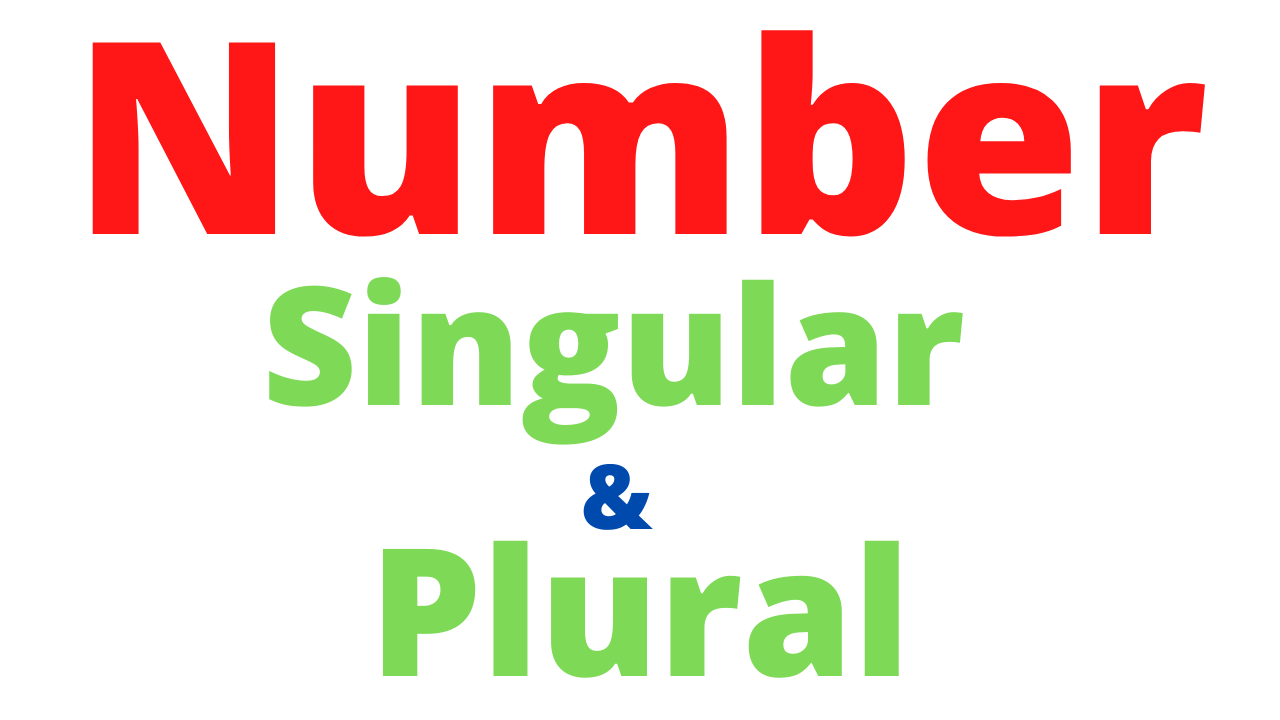 |
| Arup Roy, Lecturer in English Language & Literature. Kanchkura University College, Uttarkhan, Airport, Dhaka |
The number determines whether a noun, pronoun, verb, or determiner is singular or plural. There are two numbers in English; they are singular and plural numbers.
Singular Number
A singular number is a number that refers to one member of a designated class. For example, the bat is an example of a singular number; the plural form of the bat is bats.
Plural
Number
A plural number is a number that expresses a reference to a quantity greater than that expressed by the largest specific number category in a language, such as “more than one” in English, and “more than two” in some other languages.
You have to remember the following singular and plural number pronouns because they do not follow any rule if you go to transform from singular into plural:
|
Singular |
Plural |
Singular |
Plural |
|
I |
We |
Him/her |
Them |
|
Me |
Us |
Your |
Your |
|
My |
Our |
This |
These |
|
Mine |
Ours |
That |
Those |
|
You |
You |
His/her |
Their |
|
He/she/it |
They |
|
|
Formation of Plural Noun
Rule Number One
The plural noun is generally formed by adding "s" to the singular.
Cow -- cows
Boy -- boys
Girl -- girls
Book -- books
Tree -- trees
Dog -- dogs
Pen -- pens
Rule Number Two
Nouns ending in "s", "sh", "ch", z, or "x" form the plural by adding "es" to the singular. But, if "ch" is pronounced like "k", we are to add "s" at the end.
Class -- classes
Brush -- brushes
Branch -- branches
Kiss -- kisses
Fez -- Fezes
Match -- matches
Dish -- dishes
Stomach -- stomachs
Monarch -- monarchs
Patriarch -- Patriarchs
Matriarch -- Matriarch
Rule Number 3
If a noun ends in "o", we are to add "es".
Potato -- Potatoes
Hero -- heroes
Mongo -- mangoes
Echo -- echoes
Zero -- zeroes
Rule Number 4
If "o" is preceded by a vowel, we add only "s".
Bambo -- Bamboos
Cuckoo -- cuckoos
Portfolio -- Portfolios
Cameo -- cameos
Rule Number 5
Sometimes, though "o" is preceded by a consonant, we can use only "s" to the singular forms of those vowels.
Piano,
pianos
Photo,
photos
Logo,
logos
Kilo, kilos
Solo -- solos
Canto -- cantos
Piano -- pianos
Photo -- photos
Rule Number 6
If "o" is preceded by a consonant, we're to add "es".
Potato -- potatoes
Mango -- mangoes
Buffalo -- buffaloes
Hero -- heroes
Negro -- negroes
Volcano -- volcanoes
Cargo -cargoes
Rule Number 7
Some nouns ending in "o" can take either "s" or "es".
Portico -- Porticos/es
Commando -- commandos/es
Calico -- calicos/es
Memento -- mementos/es
Volcano -- volcanos/es
Cargo -- cargos/es
Motto -- mottos/es
Halo -- halos/es
Fresco/frescos/es
Banjo -- banjos/es
Ghetto -- ghettos/es
Rule Number 8
Nouns ending in a consonant + "y" form their plural by replacing "y" with "i" and adding "es". However, if you come across a vowel before that "y", we just add "s".
Baby -- babies
Lady -- ladies
City -- cities
Story,
stories
Monkey, Monkeys
Day, day
Toy, toys
Play, plays
Rule Number 9
The
following nouns ending in "f" or "fe" form their plural by transforming "f" or "fe" into v and adding "es".
Thief -- thieves
Wife,
wives
Leaf -- leaves
Half -- halves
Self -- selves
Calf -- calves
Loaf -- loaves
Knife -- knives
Elf -- elves
Wolf -- wolves
Shelf -- shelves
Rule Number 10
Some nouns ending in "f" or "fe" add "s".
Chief -- chiefs
Gulf -- gulfs
Safe -- safes
Proof -- proofs
Rule Number 11
A few nouns form their plural form by making some changes to the inside vowels.
Foot -- feet
Man -- men
Woman -- women
Tooth -- teeth
Mouse -- mice
Goose -- geese
Rule Number 12:
Some nouns look plural, but they are singular in number.
News, Ethics, Physics, Politics, Economics, Wages, etc.
Rule Number 13:
Though some nouns look singular, they are plural in number.
People, Peasantry, Cattle, Government, Mankind, etc.
Rule Number 14:
Some words are both singular and plural.
Species, Sheep, Deer, Canon, Corps, etc.
Rule Number 15:
We add apostrophes and "s" if we want to pluralize letters, numbers, and symbols.
- She could not write b's and d' properly in his writing.
- There are five 9's and four 3's in his accounting number.
